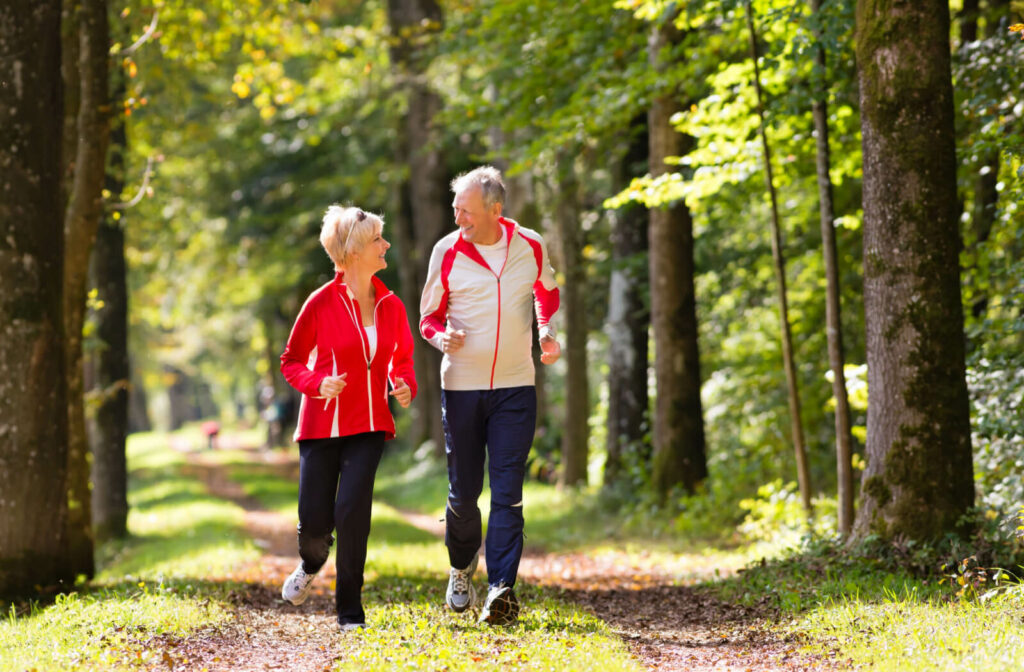One of the inevitable outcomes of aging is a reduction in mobility, strength, and muscle mass. Age-related changes can also subtly affect balance and coordination, leading to more falls and injuries.
These may be some of the most common reasons older adults exercise less. But some exercise is better than no exercise. Senior living communities offer a maintenance-free lifestyle, so residents have plenty of opportunities to do the things they enjoy while remaining fit.
Exercise is necessary at any age. Here, we discuss why it’s important for older adults to exercise and remain active as they age and the many benefits of exercise.
Why is Exercise Important as You Age
Not everything you do has to stop as you get older. And exercise is one of those things. However, only 1 in 4 people, between 65 and 74 years, exercise regularly. Physical inactivity is a risk factor for obesity, certain diseases, and chronic conditions.
Exercise is a type of physical activity that is structured, planned, and repetitive to improve or maintain fitness. Did you know that muscle mass decreases around 3–8% per decade after age 30?
The rate of decline is even higher after age 60. Inactivity in older adults can lead to involuntary loss of muscle mass, strength, and function. These can affect your day-to-day life and lead to disability or dependency on others.
How Much Physical Activity Do Older Adults Need?
The recommendations by the World Health Organization for regular physical activity for adults 65 and over include:
- Older adults should do at least 150– 300 minutes of moderate-intensity aerobic physical activity or at least 75–150 minutes of vigorous-intensity aerobic physical activity or an equivalent combination of moderate and vigorous-intensity activity throughout the week.
For additional health benefits:
- Older adults should also do muscle-strengthening activities at a moderate or greater intensity that involve all major muscle groups on 2 or more days a week.
- Older adults should do varied multicomponent physical activity that emphasizes functional balance and strength training at a moderate or greater intensity, on 3 or more days a week.
- Older adults may increase moderate-intensity aerobic activity to more than 300 minutes or do more than 150 minutes of vigorous-intensity aerobic physical activity or a combination of both.
For older adults with chronic conditions:
- When unable to meet the above recommendations, adults with chronic conditions should aim to engage in physical activity according to their abilities.
- Start small and gradually increase the frequency, intensity, and duration over time.
- Consult a physical activity specialist or healthcare professional for advice on the types and amounts of activity appropriate for their individual needs, abilities, functional limitations/complications, medications, and overall treatment plan.
For older adults with disorders that impact cognitive function:
- Doing some physical activity is better than doing none.
- Adults living with disability should start by doing small amounts of physical activity and gradually increase the frequency, intensity, and duration over time.
- There are no major risks to adults living with disability engaging in physical activity. As long as it’s appropriate to their current activity level, health status, and physical function.
- Adults living with a disability may need to consult a healthcare professional or other physical activity and disability specialist to help determine the type and amount appropriate for them.
Benefits of Exercise
The benefits of exercising for older adults are numerous:
- Exercise can prevent or delay health problems as you age, such as cardiovascular disease, stroke, diabetes, dementia, and some types of cancer.
- Besides the physical benefits of exercise, it also improves mental health, emotional well-being, social well-being, and cognitive function.
- Improve strength, balance, and quality of life so older adults can maintain independence for longer.
- Exercise helps manage body weight, either by losing or maintaining weight.
- Exercise can increase muscle mass and prevents further bone loss.
- Exercise with moderate intensity positively affects the immune system.
- Exercise improves sleep.
Stay Active at Mattison Crossing
We understand that staying motivated to exercise is a challenge on its own. And exercise is generally more fun in a group or community setting.
Mattison Crossing offers residents a robust calendar, including activities, daily exercise classes, and fitness programs to keep older adults physically active. Contact us or schedule a visit to experience our community for yourself.




